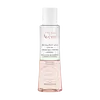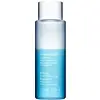What's inside
What's inside
 Benefits
Benefits

 Concerns
Concerns

 Ingredients Side-by-side
Ingredients Side-by-side

Water
Skin ConditioningC9-12 Alkane
SolventMethyl Trimethicone
Skin ConditioningButylene Glycol
HumectantPanthenol
Skin ConditioningGlycerin
HumectantSodium Chloride
MaskingPhenethyl Alcohol
MaskingParfum
MaskingPropanediol
SolventDisodium EDTA
Potassium Sorbate
PreservativeXanthan Gum
EmulsifyingTetrasodium EDTA
Centaurea Cyanus Flower Extract
AstringentGentiana Lutea Extract
EmollientDisodium Cocoyl Glutamate
CleansingSodium Cocoyl Glutamate
CleansingCI 42090
Cosmetic ColorantWater, C9-12 Alkane, Methyl Trimethicone, Butylene Glycol, Panthenol, Glycerin, Sodium Chloride, Phenethyl Alcohol, Parfum, Propanediol, Disodium EDTA, Potassium Sorbate, Xanthan Gum, Tetrasodium EDTA, Centaurea Cyanus Flower Extract, Gentiana Lutea Extract, Disodium Cocoyl Glutamate, Sodium Cocoyl Glutamate, CI 42090
 Reviews
Reviews

Ingredients Explained
These ingredients are found in both products.
Ingredients higher up in an ingredient list are typically present in a larger amount.
Butylene Glycol (or BG) is used within cosmetic products for a few different reasons:
Overall, Butylene Glycol is a safe and well-rounded ingredient that works well with other ingredients.
Though this ingredient works well with most skin types, some people with sensitive skin may experience a reaction such as allergic rashes, closed comedones, or itchiness.
Learn more about Butylene GlycolDisodium EDTA plays a role in making products more stable by aiding other preservatives.
It is a chelating agent, meaning it neutralizes metal ions that may be found in a product.
Disodium EDTA is a salt of edetic acid and is found to be safe in cosmetic ingredients.
Learn more about Disodium EDTAPhenethyl Alcohol is a colorless and aromatic alohol. It is naturally occuring in essential oils.
The scent of this ingredient is floral and often compared to rose.
Like other alcohols, this ingredient helps prevent the growth of bacteria. However, its main purpose is to impact a fragrance.
Learn more about Phenethyl AlcoholChances are, you eat sodium chloride every day. Sodium Chloride is also known as table salt.
This ingredient has many purposes in skincare: thickener, emulsifier, and exfoliator.
You'll most likely find this ingredient in cleansers where it is used to create a gel-like texture. As an emulsifier, it also prevents ingredients from separating.
There is much debate on whether this ingredient is comedogenic. The short answer - comedogenic ratings don't tell the whole story. Learn more about comegodenic ratings here.
The concensus about this ingredient causing acne seems to be divided. Research is needed to understand if this ingredient does cause acne.
Scrubs may use salt as the primary exfoliating ingredient.
Learn more about Sodium ChlorideWater. It's the most common cosmetic ingredient of all. You'll usually see it at the top of ingredient lists, meaning that it makes up the largest part of the product.
So why is it so popular? Water most often acts as a solvent - this means that it helps dissolve other ingredients into the formulation.
You'll also recognize water as that liquid we all need to stay alive. If you see this, drink a glass of water. Stay hydrated!
Learn more about Water